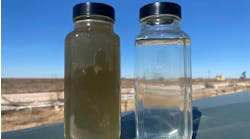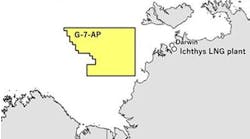Pup pieces application mitigates corrosion in topsides separation equipment
Failures due to corrosion in the oil and gas industry have been estimated to cost around $40 billion annually. Understanding the root cause of these high-cost failures entails taking some steps or innovations to understand this phenomenon, and combat and prevent it.
For the Marjan offshore oil and gas pipelines and topside piping that make up the gas-oil separation plant (GOSP-4), the Marjan project team designed the facility to protect against internal corrosion, which is considered a dominant factor contributing to potential failures and leaks in pipelines. Pitting corrosion, which occurs due to presence of different elements in the water such as O2, CO2, H2S or bacteria, is the primary corrosion mechanism leading to failures in uncoated carbon steel pipelines.
Badr M. Burshaid, Marjan & Zuluf Increment Projects Department manager, said that mitigating internal corrosion of carbon steel pipelines had been a significant challenge in the past. The internal coating of carbon steel pipes could be accomplished at pipe coating mills; but since the pipeline was field-welded, the welding of the pipe joints typically caused significant damage to the internal coating. This also led to the creation of significant corrosion cells in the heat-affected zone of the unprotected internal girth weld area. The only choice was to use higher quality alloy steels such as Inconel 625, an option deemed extremely expensive.
However, in line with the company’s initiative to foster an innovative approach to problem-solving, the Marjan Offshore GOSP-4 Project (MOGOSP4) has introduced a new application called “pup pieces.” Innovations in internal coatings coupled with innovations in internal girth weld technologies have enabled the MOGOSP4 team to design internally coated carbon steel pipes using “pup pieces.”
So, what are “pup pieces”? Hamad S. Al-Shaiban, senior project manager of GOSP-4, describes pup pieces as carbon steel spools with Corrosion Resistant Alloys (CRA) Inconel 625 cladding material applied at 300 mm from both ends of the pipe spool. The rest of the spool is internally coated to eliminate the requirements of flange connections and internal girth weld coating.
Implementing these CRA pup pieces in lieu of conventional breakup flange connections for the coated lines will overcome the challenges associated with the internal girth weld coating of irregularly shaped spools and elbows. “This innovation will inevitably lead to the elimination of excessive number of flanges (estimated to be ~3,100 flanges) which will, as a result, significantly reduce the weight of the platform, reduce the leak paths in Marjan GOSP-4 sour service pipes, and ultimately enhance the overall safety aspect of the facility,” Burshaid said.



